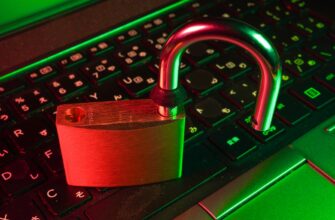Why Offline Crypto Wallet Backups Are Non-Negotiable
Imagine losing access to your life savings because your phone got damaged or your laptop crashed. This nightmare scenario is why offline crypto wallet backups are essential for every beginner. Unlike traditional bank accounts, cryptocurrency transactions are irreversible, and lost wallet access means permanent loss of funds. Offline backups (often called “cold storage”) create physical copies of your recovery phrase or private keys, immune to hackers, malware, and device failures. For new crypto users, mastering this process is your first line of defense against catastrophic losses.
Understanding Crypto Wallet Fundamentals
Before backing up, know what makes your wallet work:
- Seed Phrase (Recovery Phrase): 12-24 random words that generate your private keys. This is your master backup.
- Private Keys: Cryptographic codes proving ownership of crypto assets. Never share these!
- Public Address: Your “account number” for receiving funds. Safe to share.
Hot wallets (software-based) are convenient but vulnerable online. Cold wallets (offline hardware devices) are more secure but still require backup.
Step-by-Step: Creating Your Offline Backup
- Generate Your Recovery Phrase: When setting up a new wallet (e.g., MetaMask, Trust Wallet), write down the seed phrase shown during initialization. Never screenshot or email it.
- Choose Physical Backup Materials: Use fire/water-resistant options like:
- Cryptosteel capsules
- Stainless steel recovery plates
- Engraved metal tiles
Avoid paper unless laminated and stored securely.
- Handwrite & Verify: Write the phrase twice on separate backups. Cross-check each character. Misspellings = lost funds.
- Store in Geographically Separate Locations: Keep one copy in a home safe and another with a trusted relative or bank safety deposit box.
- Test Your Backup: Restore the wallet on a new device using ONLY your backup to confirm it works. Do this before transferring funds.
Top 5 Offline Backup Mistakes Beginners Make
- Storing digital photos/cloud copies (vulnerable to hacks)
- Using ink that fades (always use permanent engraving or industrial markers)
- Backing up only private keys instead of the full seed phrase
- Keeping all backups in one location (fire/theft risk)
- Forgetting to update backups after adding new wallets or accounts
Advanced Offline Techniques for Maximum Security
Once comfortable with basics, consider these robust methods:
- Multi-Signature Wallets: Require 2-3 physical backups to access funds (e.g., Casa).
- Shamir’s Secret Sharing: Split your seed phrase into encrypted fragments stored in different locations.
- Encrypted USB Drives: Store digital backups in password-protected VeraCrypt containers on air-gapped devices.
FAQ: Offline Crypto Backup Essentials
Q: How often should I update my offline backup?
A: Only when creating new wallet accounts. Your seed phrase grants access to ALL future addresses generated from it.
Q: Can I store my seed phrase in a password manager?
A: Never. Password managers are online targets. Offline means PHYSICAL separation from networks.
Q: What if my backup is lost or damaged?
A: Immediately transfer funds to a new wallet with a fresh backup. Old backups become useless once you generate a new seed.
Q: Are hardware wallets enough without a backup?
A: Absolutely not! If the device breaks or gets lost, your backup phrase is the ONLY recovery option.
Q: How do I securely dispose of old backups?
A: Shred paper backups, degauss/drill through metal plates, or melt cryptosteel components before discarding.
Your Security Journey Starts Now
Backing up your crypto wallet offline isn’t just a technical step—it’s financial self-defense. By physically securing your seed phrase using fire-resistant materials, geographic separation, and rigorous verification, you transform vulnerability into unbreakable resilience. Remember: In crypto, you are your own bank. Treat your offline backup with the same gravity as vault gold. Start today—your future self will thank you.








